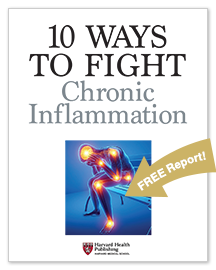Omega-3-rich foods: Good for your heart
Back in the 1970s, Danish researchers discovered something curious about the Inuits of Greenland. Despite eating a high-fat diet (about 40% of their daily calories came from fat), the Inuits had far lower rates of heart disease and heart attacks than people in Western nations. When the researchers delved deeper, they discovered one reason for the Inuits' low rates of heart disease: a seafood-heavy diet rich in the polyunsaturated omega-3 fatty acids—eicosapentaenoic acid (EPA) and docosahexaenoic acid (DHA). Since then, investigators have homed in on omega-3s—not just for their cardiovascular benefits, but also for their potential effects on thinking ability, vision, and inflammation.
To continue reading this article, you must log in.
Subscribe to Harvard Health Online Plus (HHO+) to unlock expert-backed health insights, personalized tools, and exclusive resources to feel your best every day.
Here’s what you get with your HHO+ membership:
- Unlimited access to all Harvard Health Online content
- 4 expertly curated newsletters delivered monthly
- Customized website experience aligned to your health goals
- In-depth health guides on topics like sleep, exercise, and more
- Interactive features like videos and quizzes
- Members-only access to exclusive articles and resources
I’d like to subscribe to HHO+ for $4.99/month to access expert-backed content to help make smart, informed decisions about my well-being.
Sign Me UpAlready a member? Login ».
Disclaimer:
As a service to our readers, Harvard Health Publishing provides access to our library of archived content. Please note the date of last review or update on all articles.
No content on this site, regardless of date, should ever be used as a substitute for direct medical advice from your doctor or other qualified clinician.















